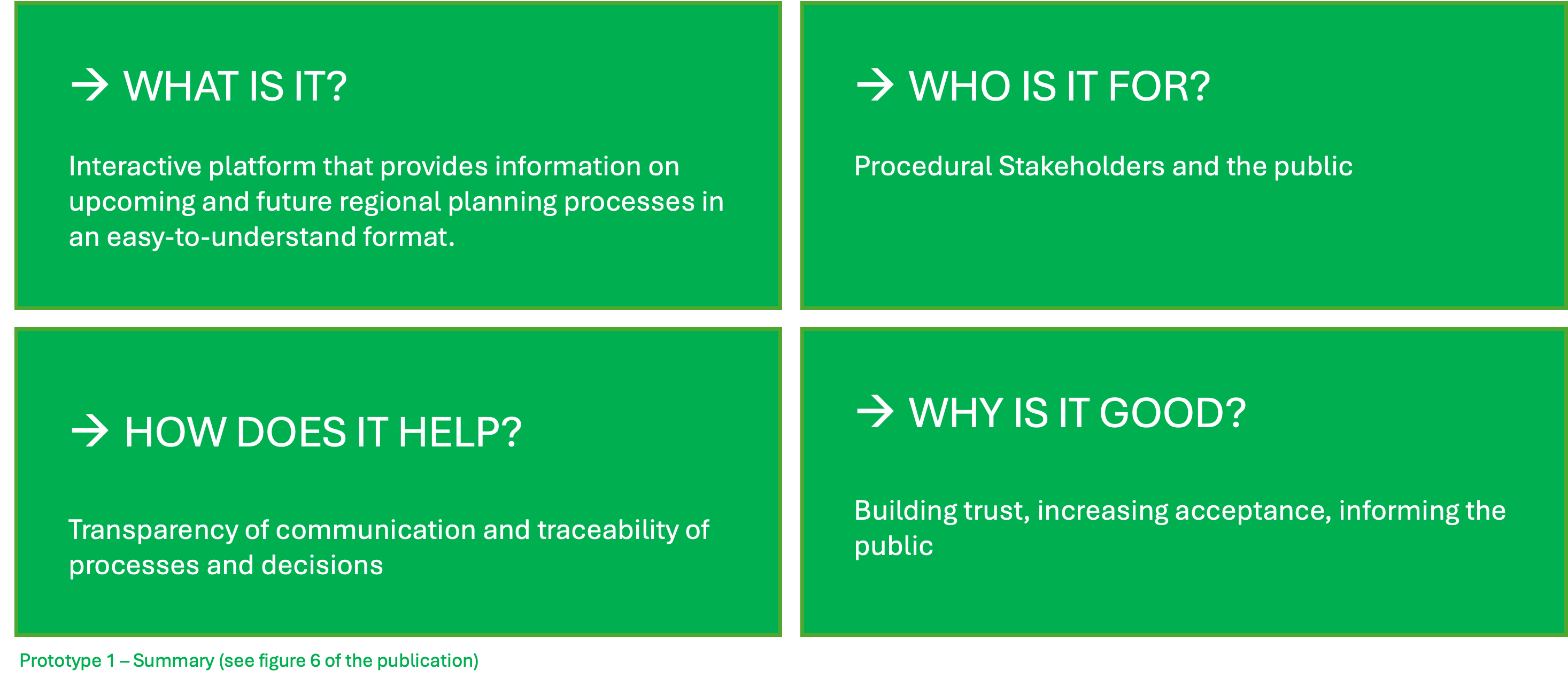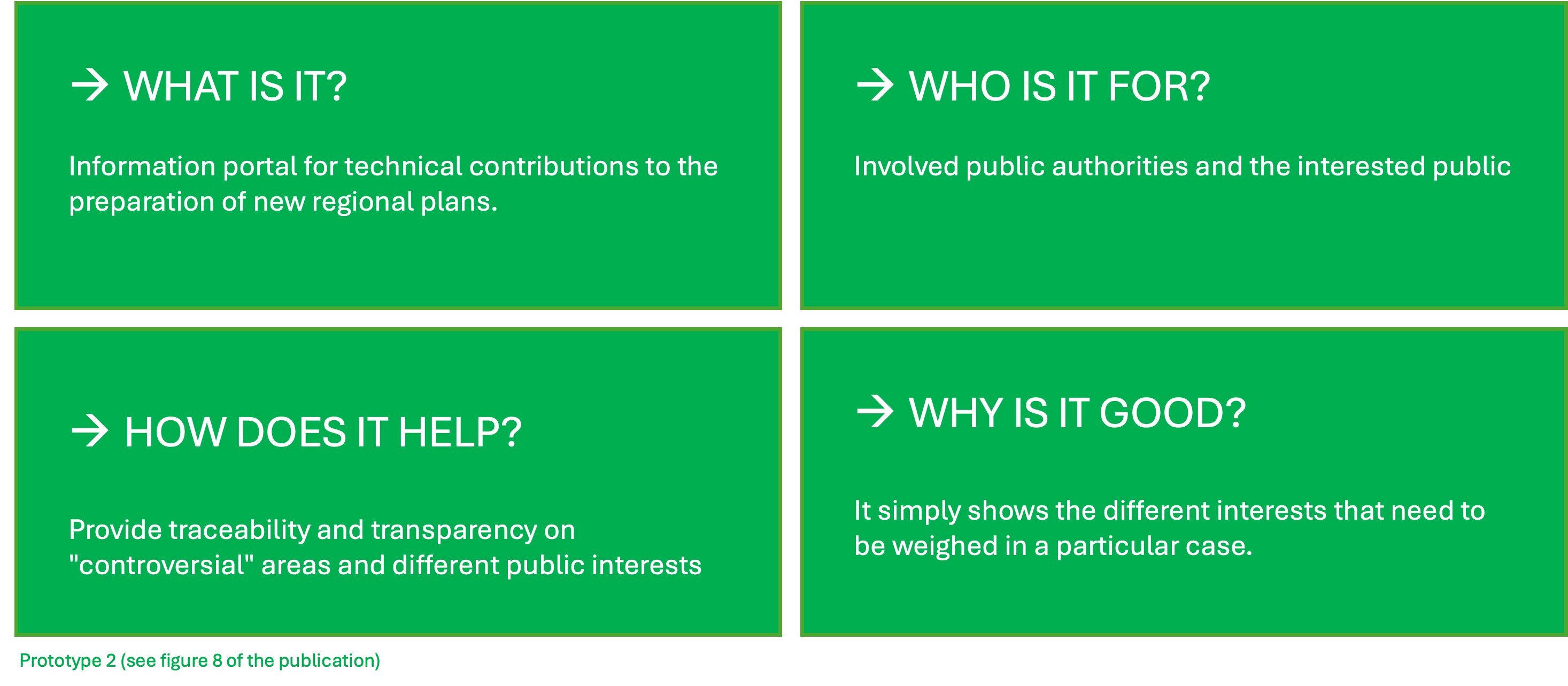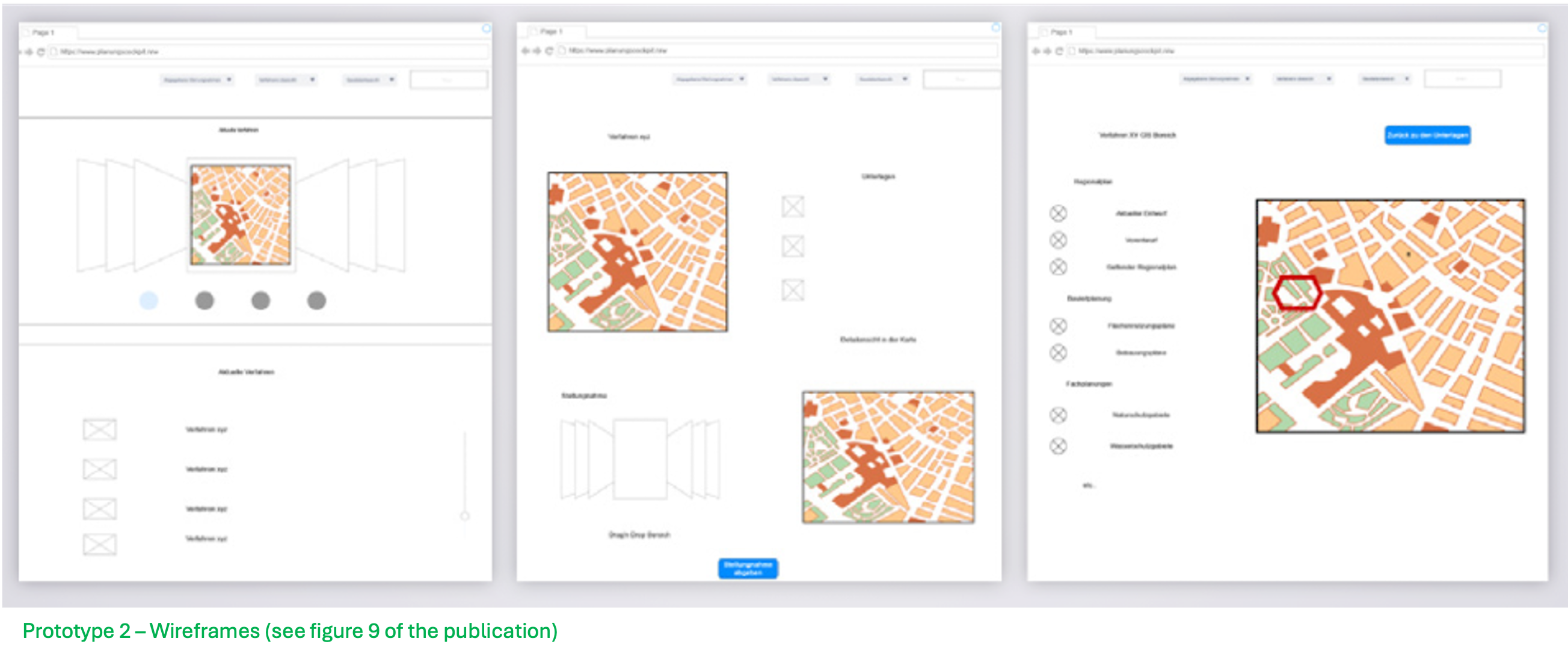Design Thinking is not only a thing for the private sector; it is also finding its way into the public sector. In 2019, the Ministry of Economic Affairs, Innovation, Digitalization, and Energy of the State of North-Rhine-Westphalia (NRW) in Germany decided to use Design Thinking to improve its federal state and regional planning processes. In cooperation with both internal and external experts, the objective was to generate new ideas, precise procedural models, and protypes for innovative forms of regional development, while also testing their practicability. The focus was on the effectiveness of informal procedural steps that take place in preparation for and associated with the formal regional planning procedure.

Kick-Off
To begin with, the task was to formulate a specific question to focus on throughout the entire process, as regional planning is a complex and multi-layered topic in both technical and legal terms. For this reason, a kick-off event was held with representatives of the state and regional planning authorities. The event aimed to familiarize the participants with the Design Thinking process and the key challenges facing the federal state and regional planning. It also aimed to identify the innovation task to be pursued later in the actual process and determine the areas of expertise required for the external experts who will be part of the process team.
The Innovation Task
After everyone at the kick-off event had a common understanding of the regional planning process and knew what was done well and poorly, they formulated the innovation task.

In individual and group work, many possible innovation tasks were initially formulated. After a lengthy discussion, the participants, along with the commissioner and head of the regional planning authority, agreed to the following innovation tasks:
- Develop a method / format / process / medium to inform stakeholders about the tasks / purpose / process of regional planning in order to achieve a common understanding of the different concerns.
- Develop ideas for informal measures / steps that can accompany the formal procedure as optional acceptance-enhancing modules and can contribute to shortening the overall duration of regional planning procedures.
The Project Team
To select the appropriate members for the project team, the attendees at the kick-off event looked for occupational groups related to planning issues or those encountering similar challenges in other industries. For instance, professions in which people either communicate complex or difficult information or balance and reconcile various needs.
The Design Thinking Process
The project team followed the six common phases of the Design Thinking process, which was moderated by IT.NRW:

Understand
The first step is to get a sense of the most pressing problems and their causes. It is crucial to understand the interrelationships and to identify the stakeholders involved. Before the project team could start finding solutions, they needed to establish a shared understanding of the problem. Therefore, they analyzed the procedure for preparing and altering a regional plan. During a thorough discussion, the experts from the regional planning authorities on the project team explained the mandatory and optional procedural steps, the duration of each step, and the involvement of stakeholders at different stages.
Observe
Observing involves developing empathy by understanding the stakeholders’ point of view and the reasons behind it. It requires observing the everyday lives of the stakeholders and users. Therefore, after understanding the problem, the project team began to reflect on the most pressing issues and their causes, as well as potential solutions. Since the Design Thinking process is human-centered or user-centered respectively, it was necessary to interview the people involved in the process. To achieve this, the project team divided into interview teams, which spoke with either representatives from the general public or representatives from public interest groups, depending on the innovation task. During the interview, the process team explained the idea of Design Thinking and conducted a questionnaire to identify any problems the interviewees may have and to gather suggestions for improvements.
The interviewees all agreed that regional planning is highly relevant. They emphasized the difficult task of balancing different interests and demands regarding space and noted that the results have a profound impact on local development opportunities. Another important outcome of the interviews was the information provided for stakeholders. The complex process of regional planning needs to be presented in a simpler and clearer manner. There was also a desire for an easier access to procedural information. The public authorities expressed a particular desire for better traceability of regional planning, including the data basis. Furthermore, there was a request for easier submission of statements and more transparency in the handling of statements. It was also pointed out, that the regional planning procedures are overly complex and should be streamlined. On the other hand, some interviewees wished for more exchange and early as well as extensive involvement of all stakeholders. This illustrates the conflicting goals, which are an example for the enormous challenges the regional planning authorities face.
Define point of view
During this phase, the knowledge gained in phases one and two is summarized. One can now adopt the stakeholders’ point of view and gain a better understanding of their needs. Based on this, the challenge that needs to be addressed can be formulated collaboratively. After conducting the interviews, the process team gathered and analyzed the results. Due to the desires to simplify the information process, there is a need for more effective use of digital information transfer.
Generate Ideas
To generate ideas, a free space for new, modern, and innovative solutions is necessary. The focus is always on solving the previously defined challenge while considering the stakeholders’ and users’ needs. The first step is to collect as many ideas as possible (quantitatively). The next step is to evaluate which of these ideas are the most promising (qualitatively). The process team collected every idea, no matter how unusual it was. They discussed and evaluated the ideas until only two were left, both focused on making information more accessible to stakeholders. The ideas were then discussed with stakeholders during follow-up interviews.
Idea 1: Developing a website that centralizes information and documents for the public, while providing regular and transparent updates on the status of the procedure.
Idea 2: Creating an information portal that offers transparent and easy access to background information on draft plans, such as specialist geodata or requested technical contributions for public authority representatives.
Develop prototype
In this phase, the previously developed idea or solution approach is prepared for testing, and a prototype is created. The project team created two prototypes for the ideas:
Prototype 1: Information portal for current regional planning procedures
The website is an interactive platform for participation that not only centralizes all information, but also provides an FAQ-section. The status of the procedure will be updated regularly on an interactive story-map to ensure transparency at any time and build trust. Users can also register for a newsletter and submit statements.

Prototype 2: Transparent data basis for regional planning procedures
The information portal provides technical contributions and concepts from public authorities in a user-friendly and address-oriented manner for individual preparation procedures, using specialist geodata and statements. Additionally, if possible, the digital documents for urban land-use planning of the municipalities should be accessible.


Test & Optimize
The next step is to test the protoype, get feedback from the field, make improvements, and then test again until the best possible result is achieved. The project team presented their prototypes to the interviewees again, which found the ideas to be good and helpful. They expressed concerns about user-friendliness, accessibility, and data protection. All suggestions were noted and will be considered during further development.
Conclusion and Prospects
All participants evaluated the process positively. It provided the project team with a new experience of thinking about possible solutions outside of normal governmental structures. Often, there is no time to deal with such issues during a typical workday. The Design Thinking process helped them to view known problems from the perspective of the stakeholders. The interviewees also welcomed the ministry’s action. They appreciated the interest shown in their point of view and that it was focused. During the conversations, lots of potential for improvements in the process of regional planning was also identified. These insights will be valuable for further developments. In the end, the process team developed two prototypes, one of which is already usable today through the participation portal “Beteiligung NRW”.
Although Design Thinking is not yet widely used in the public sector, it should be considered more frequently. Even if the actual implementation is still unclear, it can be beneficial to prioritize the user’s perspective and consider alternative viewpoints.



